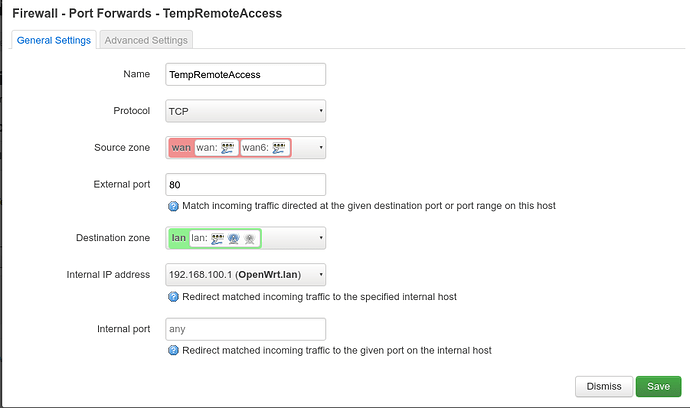Hi Folks,
Im sure this is going to be an obvious and easily resolved post/question but im really struggling to figure out what im doing wrong. Yes im new to OpenWRT, but I have some knowledge (therefore dangerous! lol) - I have been reading the docs and post and learning.
Im playing with/trialling a netgear r7800, with a view that it becomes my replacement router to my BT Smart Hub 6A. (Im also getting a hg612 modem)
I have flashed hnyman/openwrt latest master FW on it successfully and have been familiarising myself with the LuCI interface, enabling wifi etc ... currently I directly connect PC->r7800 via ethernet or WIFI, but as the WAN interface isnt connected to anything/the internet I cant read forums/access the web at the same time as being connected and playing.
So I would like to temporarily access the r7800 on my current "live" network served by the BT Hub. So I have connected the WAN port of the r7800 via ethernet to a switch on the LAN side of the BT Hub. The BT Hub diligently gives the r7800 and IP (I can see this if I connect via wifi to the r7800) 192.168.1.20 from my specified DHCP range in the BT Hub and my plan is to port forward access to LuCI and then SSH (Temporally - I know what would not be wise when I have it connected to a modem). But I can seem to get it to work.
I have ensured dropbear is accepting on any/all interfaces (https://blog.differentpla.net/blog/2015/05/27/openwrt-ssh-wan/) and I have tried various GUI ways to forward the port under network>firewall>port forwards but cant get an ping / login or response on 192.168.1.20 on the BT side of the LAN
I have tried adding a forward TCP source:wan external port 80 (also tried 22 & 443)
with no other settings but also various combinations of destination LAN / internal IP 192.168.1.1(r7800 DHCP LAN table) internal ports etc ...
And im just confusing myself as all I get is no response on the BT LAN 192.168.1.20 address at all, I have a suspicion that it might be the whole theory of what im trying to do that is messing with me!.
(I did consider connecting the LAN side of the r7800 to the LAN side of the BT router and disabling the DHCP on openwrt to stop it conflicting)
So, yes a "solution" would be great but also maybe some tip on how to debug this as I will be forwarding ports in anger when I go live!
I assume im also better to setup SSH and configure over CLI, but the GUI is just easy as im starting ...
Thanks and sorry if this is all a bit dull/basic
HNY and all the very best
Taemo
 I can access LuCI on m local 6A LAN.
I can access LuCI on m local 6A LAN.